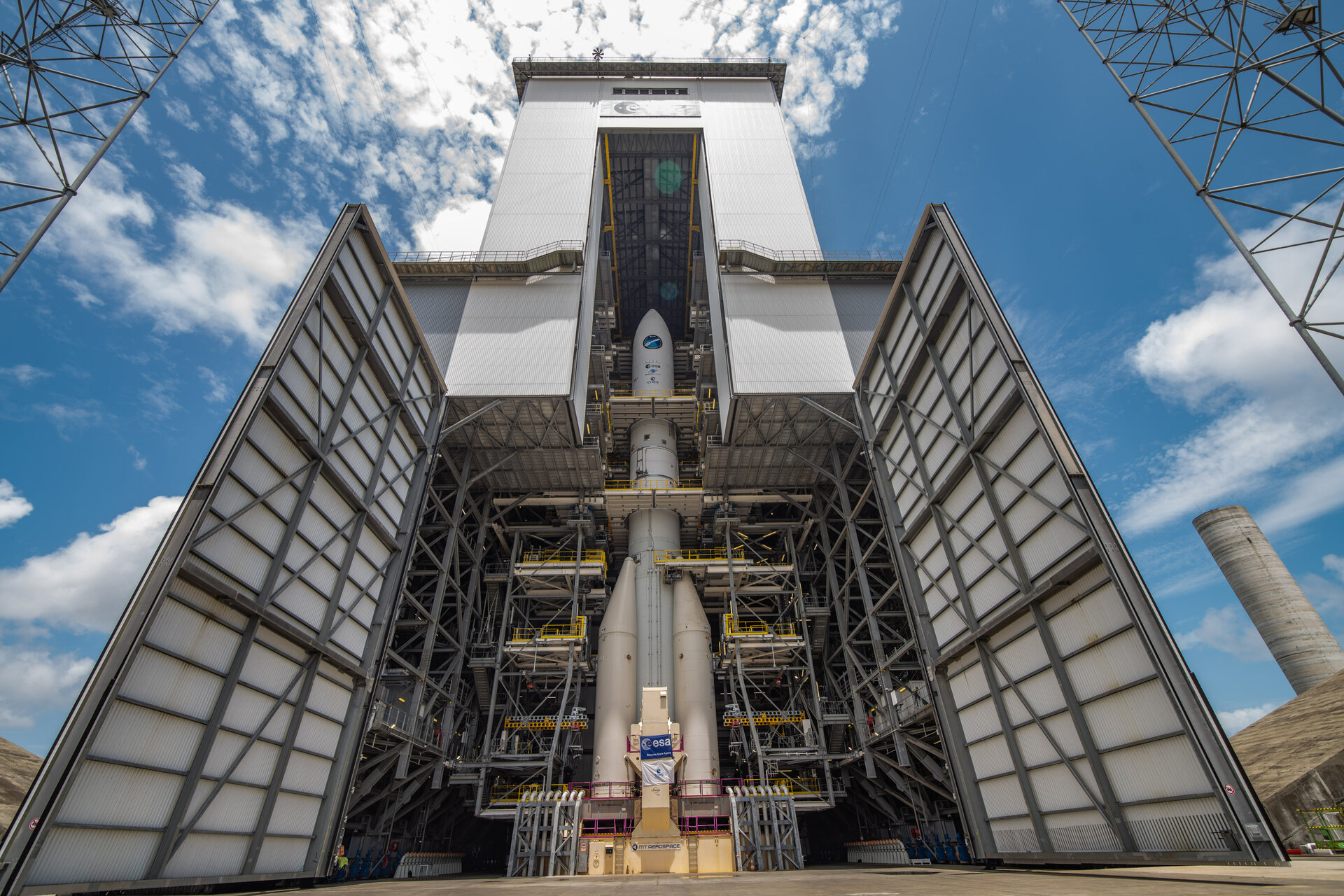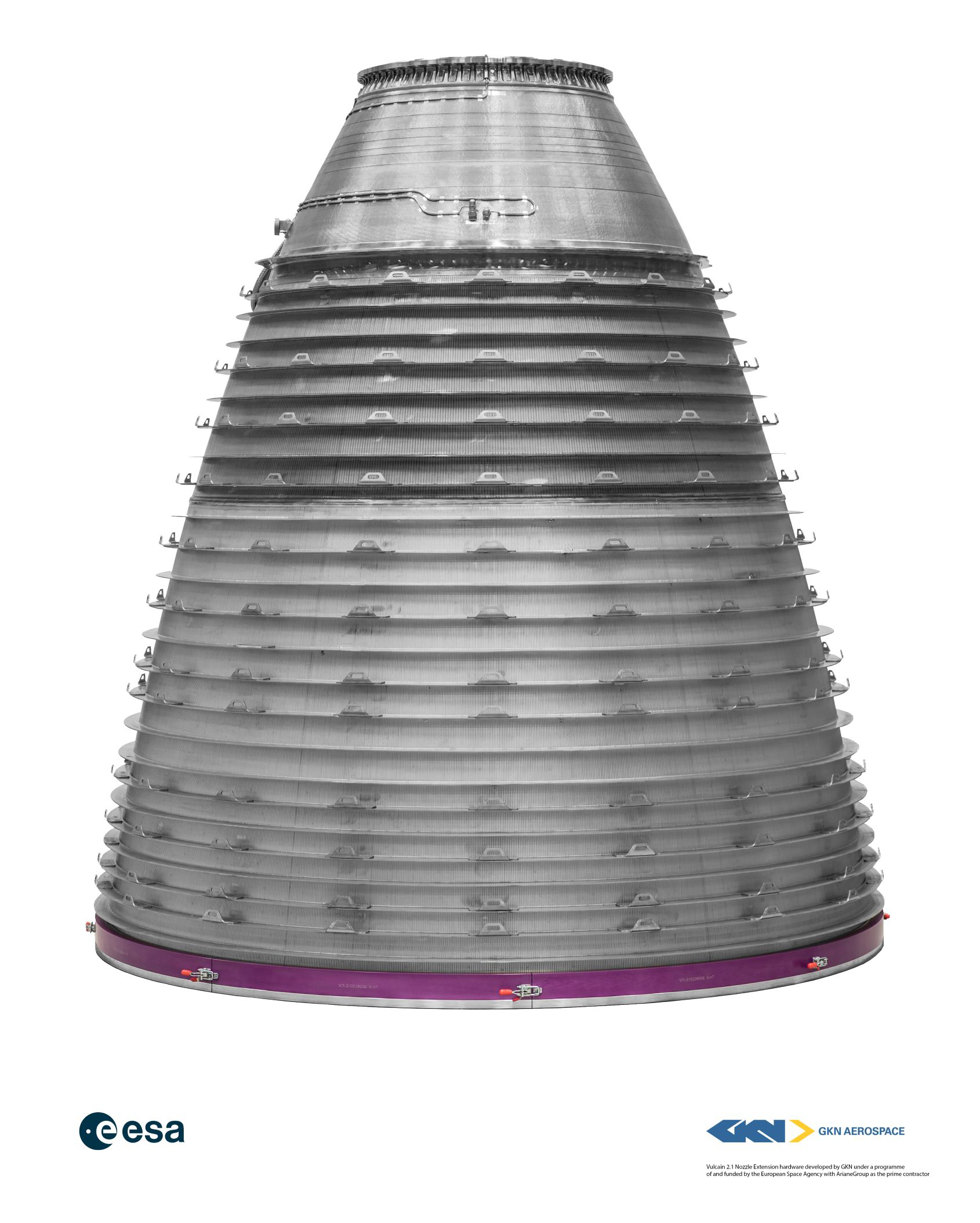British-based aerospace pioneer GKN Aerospace has secured a contract extension to supply rocket engine subsystems for the next phase of Ariane 6 heavy-lift launchers being developed by prime contractor ArianeGroup for the European Space Agency (ESA). The contract is in direct continuation of its current deal for producing additively manufactured parts for ArianeGroup and covers the industrialization period of break-through laser-welded technology and AM structures for the launch systems.
Under the new agreement, GKN Aerospace will supply nozzles for the Vulcain rocket engines that will help propel Ariane 6 in the first 10 minutes of flight, as well as main and upper-stage turbines for the following 14 launchers. The contract includes the manufacturing and supply of units to be produced from now until 2025.
Key steps
Currently, ArianeGroup, a joint venture of Airbus and Safran, is developing the new modular and flexible launcher Ariane 6 with fellow European industrial partners. ArianeGroup is the prime contractor and design authority, while the ESA oversees the procurement and architecture of the overall launch system.
As the only European asset allowing independent access to space for strategic missions, the Ariane 6 family of launchers aims to be the optimum launch vehicle to cater to various missions for commercial and institutional customers. It is also expected to provide the flexibility to launch both heavy and light payloads to a wide range of orbits for applications such as Earth observation, telecommunication, meteorology, science, and navigation.
 Fully stacked Ariane 6. Image courtesy of ArianeGroup.
Fully stacked Ariane 6. Image courtesy of ArianeGroup.A significant upgrade over the Ariane 5 launch vehicle, the 60-meter-high Ariane 6 launcher will weigh approximately 900 tonnes when launched with a full payload – roughly equivalent to one and a half Airbus A380 passenger airplanes. For the development of Ariane 6, ESA is working with an industrial network of several hundred companies in 13 European countries and spent a total of over €3.8 billion ($4 billion), much more than what Elon Musk spent to develop the SpaceX semi-reusable Falcon 9 (roughly $ 390 million) and Falcon Heavy (up to $750 million) rockets against which the Ariane 6 will compete.
Built with 3D printing
Since 2018, GKN Aerospace has been developing and additively manufacturing rocket engine turbines for ArianeGroup. However, GKN Aerospace’s space business unit has been active in the Ariane program since its inception in 1974. Having contributed to the program at every stage, from initial research and development through to serial production, the company has made over 1,000 combustion chambers and nozzles as well as over 250 turbines for the Ariane rocket.
At its Trollhättan site in Sweden, GKN Aerospace says its currently focused on industrializing and integrating novel, innovative technology into its Ariane 6 products. This includes the nozzle channel wall, which will consist of all-new technologies in a flight application. Essential to prepare for increased production in the next phase of launcher exploitation, the design has been continuously improved over time. During the transition batch process, it will be further matured in GKN Aerospace’s state-of-the-art center of excellence.
 GKN’s additively manufactured Vulcain nozzles. Image courtesy of GKN Aerospace.
GKN’s additively manufactured Vulcain nozzles. Image courtesy of GKN Aerospace.Commenting on the new deal, ArianeGroup’s Head of Procurement Stephane Nogatchewsky said: “Following the signature of the exploitation contracts with Sabca, Airbus Spain, Europropulsion, Avio, and MTAerospace, this contract with GKN Aerospace is a new and key step towards a strong Ariane 6 European team. While the inaugural flight of Ariane 6 is getting closer and the industrial ramp-up is intensifying, this collaboration is a positive and critical milestone for the future of Ariane 6 operations. Also, unifying European actors is paramount to ensure further A6 industrial robustness, competitiveness and preserve European autonomous access to space.”
Originally set for an inaugural launch in July 2020, setbacks in design improvements, supply chains, and technical issues have delayed its first flight, which is now planned for the fourth quarter of 2023 out of Europe’s Spaceport in Kourou, French Guiana. However, the Ariane 6 still needs to achieve three critical milestones by the first quarter of 2023. ESA Director General Josef Aschbacher stressed the importance of completing the upper stage hot firing test campaign, hot firing tests of Ariane 6’s core stage, with its Vulcain 2.1 engine, on the launch pad in French Guiana, and a pending launch system qualification review.
Subscribe to Our Email Newsletter
Stay up-to-date on all the latest news from the 3D printing industry and receive information and offers from third party vendors.
Print Services
Upload your 3D Models and get them printed quickly and efficiently.
You May Also Like
Havaianas Collaborates with Zellerfeld to Launch 3D Printed Flip-Flops
The shoe of the summer is undoubtedly the flip-flop. Easy on, easy off, your feet won’t get sweaty because there’s not much material, and they’re available in a veritable rainbow...
UCLA Researchers Develop 3D Printed Pen that May Help Detect Parkinson’s Disease
Diagnosing Parkinson’s disease is difficult. Often, early symptoms of the progressive neurological condition may be overlooked, or mistaken for signs of aging. Early diagnosis can help save lives and improve...
Printing Money Episode 30: Q1 2025 Public 3D Printing Earnings Review with Troy Jensen, Cantor Fitzgerald
Printing Money is back with Episode 30, and it’s that quarterly time, so we are happy and thankful to welcome back Troy Jensen (Managing Director, Cantor Fitzgerald) to review the...
Heating Up: 3D Systems’ Scott Green Discusses 3D Printing’s Potential in the Data Center Industry
The relentless rise of NVIDIA, the steadily increasing pledges of major private and public investments in national infrastructure projects around the world, and the general cultural obsession with AI have...
































